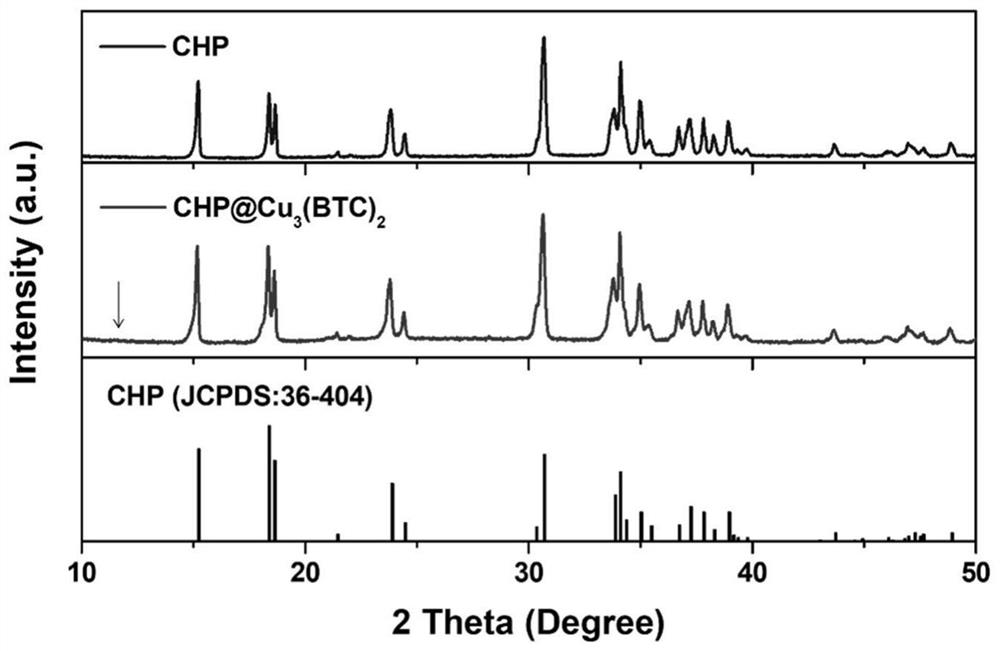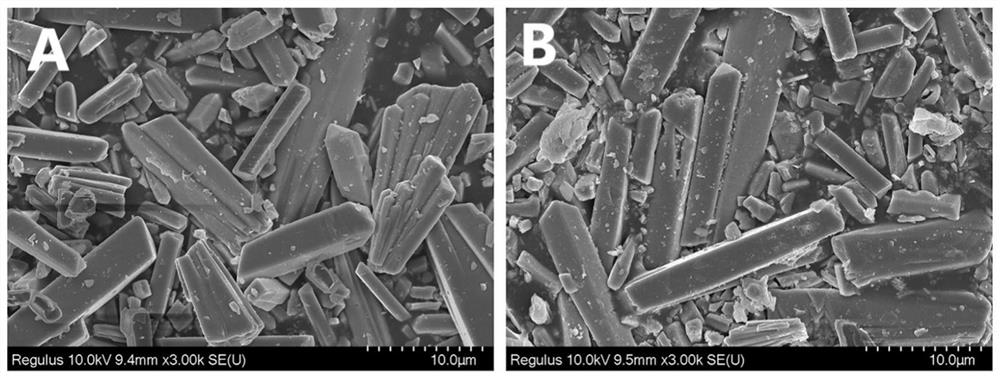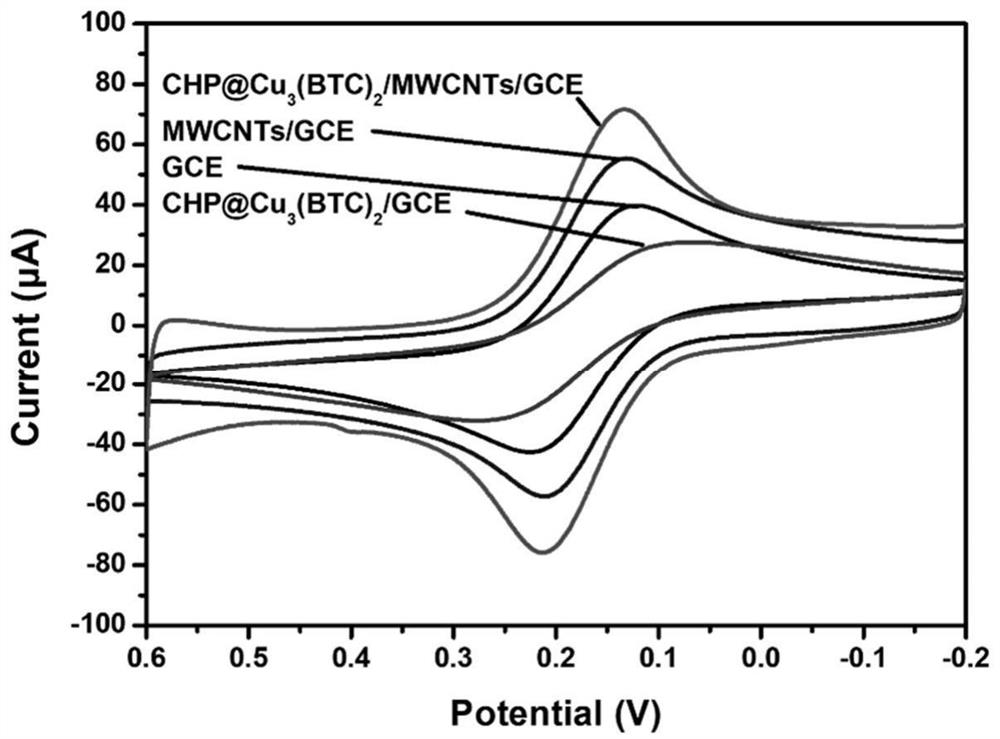Copper hydroxyphosphate-organic metal ion skeleton/multi-walled carbon nanotube composite material as well as preparation method and application thereof
A technology of multi-walled carbon nanotubes and copper hydroxyphosphate, applied in the fields of nanomaterials and electrochemical sensors, can solve the problems of long operation time and expensive instruments, and achieve improved stability and adsorption, excellent mechanical properties, and excellent detection ability. Effect
- Summary
- Abstract
- Description
- Claims
- Application Information
AI Technical Summary
Problems solved by technology
Method used
Image
Examples
Embodiment 1
[0043] Synthesis of CHP
[0044] Add 3.2 g of copper acetate to 80 mL of water, stir evenly, slowly add 0.544 mL of phosphoric acid dropwise [n(copper acetate):n(phosphoric acid)=2.0:1.0], and stir for 1 h. After the suspension was mixed evenly, it was added to the reaction kettle, placed in an oven, and heated at 140 °C under normal pressure for 4 h. After the reaction, the precipitate was obtained by centrifugation, washed three times with deionized water and ethanol respectively, and dried at room temperature for 12 h to obtain a green solid, which was the copper source CHP.
[0045] CHP@Cu 3 (BTC) 2 Synthesis
[0046] Add 1.3 g of CHP prepared above to 51 mL of water and stir, then add 45 mL of a mixed solution of trimesic acid and N,N-dimethylformamide (DMF) (0.025 mol L -1 ), the pH of the solution was adjusted to 6 with 4% NaOH solution, and after stirring at room temperature for 1 h, the precipitate was recovered by centrifugation, washed three times with ethanol, ...
Embodiment 2
[0056] Electrochemical Characterization of Different Modified Electrodes
[0057] In order to examine the electrochemical behavior of different modified electrodes, at 5 mmol·L -1 K[Fe(CN) 6 ] 3- / 4- 0.1mol·L -1 In the KCl solution, CV was used to scan GCE, CHP@Cu 3 (BTC) 2 / GCE, MWCNTs / GCE, CHP@Cu 3 (BTC) 2 / MWCNTs / GCE four different electrodes, by studying the peak potential and current magnitude presented by different electrodes, the performance of the electrodes is judged. CV curve such as image 3 shown, although CHP@Cu 3 (BTC) 2 The peak current of the / GCE electrode is smaller than that of GCE, but the CHP@Cu 3 (BTC) 2 The electrochemical peak current value increased after the composite of / MWCNTs, indicating that the composite material has a good effect on Fe 2+ / Fe 3+ The electron pair has a very good electrocatalytic ability, which fully reflects the good synergistic effect between MOFs and MWCNTs, and enhances their electrical conductivity and electrocat...
Embodiment 3
[0060] The effect of buffer solution pH
[0061] In the electrochemical reaction of organic compounds, protons always participate and play a role, and the pH value of the buffer solution has an important influence on the proton transfer between compounds. Figure 5 (A) is CHP@Cu 3 (BTC) 2 / MWCNTs / GCE in 0.1M phosphate buffered saline (PBS), to 2.5×10 -4 mol·L -1 Graph of the LSV response of the CPM solution. Depend on Figure 5 (B) It can be seen that E and pH change linearly, and the linear regression equation is: Potential=-0.05291pH+1.089(R 2 = 0.9384). As the pH value increased from 5.0 to 10.0, the peak current of CPM first increased and then decreased, and the potential gradually shifted negatively, reaching the maximum value at pH 8.0. This indicates that the pH value of the buffer solution will hinder the proton transfer between CPMs, so the PBS buffer solution with pH 8.0 was selected for subsequent experiments.
PUM
| Property | Measurement | Unit |
|---|---|---|
| length | aaaaa | aaaaa |
Abstract
Description
Claims
Application Information
 Login to View More
Login to View More - R&D
- Intellectual Property
- Life Sciences
- Materials
- Tech Scout
- Unparalleled Data Quality
- Higher Quality Content
- 60% Fewer Hallucinations
Browse by: Latest US Patents, China's latest patents, Technical Efficacy Thesaurus, Application Domain, Technology Topic, Popular Technical Reports.
© 2025 PatSnap. All rights reserved.Legal|Privacy policy|Modern Slavery Act Transparency Statement|Sitemap|About US| Contact US: help@patsnap.com



